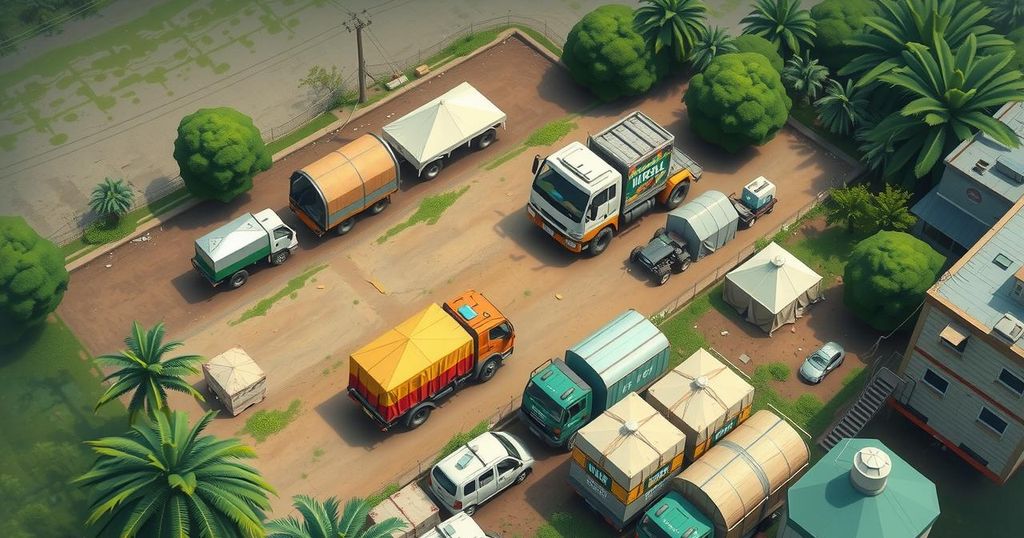India Plays Pivotal Role in Myanmar Earthquake Humanitarian Response

India has emerged as a vital contributor to the humanitarian response to the recent earthquake in Myanmar, providing over 1,000 metric tonnes of aid and deploying rescue teams. With significant infrastructure challenges and rising aid needs, the UN emphasizes India’s role in long-term recovery efforts amid ongoing coordination and logistical limitations.
India has become a crucial actor in response to the earthquake disaster in Myanmar, as reported by a UN official. The earthquake, which struck on March 28 with a magnitude of 7.7, has impacted over 17 million people, with 9 million experiencing significant tremors. India has mobilized quickly, deploying over 1,000 metric tonnes of humanitarian aid under Operation Rama, which includes essential supplies such as food, medical resources, and support for field hospitals.
Sajjad Mohammad Sajid, Head of the UN Office for the Coordination of Humanitarian Affairs (OCHA) in Myanmar, commended India’s rapid logistics in providing assistance to urban areas, particularly Mandalay, where infrastructure damage has severely hindered medical care. A 200-member search and rescue team from India was also dispatched to aid in the recovery efforts, and the establishment of a field hospital has proven critical, addressing the overwhelming healthcare needs in the region.
The earthquake has resulted in approximately 3,500 confirmed fatalities, with 5,000 individuals injured and around 200 missing. The region’s infrastructure has suffered significantly, damaging vital connectivity across numerous townships and compounding challenges from ongoing internal conflicts. OCHA continues to coordinate with Indian authorities, anticipating India’s long-term involvement in rebuilding Myanmar’s societal framework and livelihoods after the disaster.
India’s experiences with successful post-disaster reconstruction, especially following the earthquakes in Gujarat and Kashmir, provide valuable insights for Myanmar’s recovery efforts. In light of this, OCHA head Sajid emphasized India’s importance as a neighboring country with historical ties, making its role in the recovery indispensable.
In addition to Operation Rama, India has initiated ‘Operation Brahma’ to enhance relief efforts amidst ongoing logistical difficulties stemming from damaged infrastructure. Residents in Mandalay still face unrest, sleeping outdoors due to concerns over potential aftershocks. Currently, the UN has allocated $5 million for emergency aid, alongside an additional $17 million for future recovery efforts, though there is a pressing need for more financial support, especially since Myanmar’s humanitarian plan is severely underfunded at only 5% of its $1.1 billion goal for the year 2025.
India’s substantial and swift humanitarian response following the earthquake in Myanmar highlights its role as a key player in international disaster relief efforts. Coordinated logistics through operations such as Operation Rama and Brahma, alongside ongoing support for medical facilities, demonstrate the impact of timely aid. The need for further financial resources and long-term recovery plans remains critical as UN officials continue to navigate the complexities of the disaster’s aftermath. The experiences India offers from past disasters could prove essential for Myanmar’s rebuilding process.
Original Source: www.hindustantimes.com







